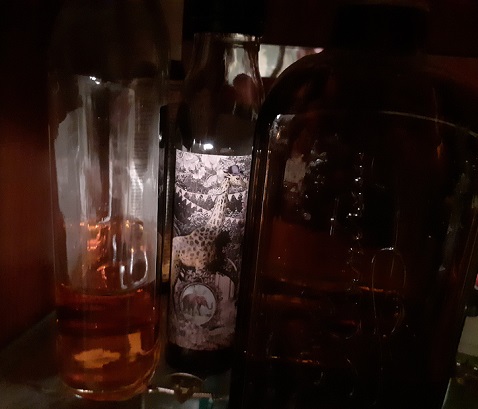 Compared to obesity or weed, the chaos that alcohol inflicts on acne isn’t mysterious whatsoever.
Compared to obesity or weed, the chaos that alcohol inflicts on acne isn’t mysterious whatsoever.
Minutes after drinking, your body metabolises alcohol into an toxin called acetaldehyde, flooding your bloodstream and creating the pumping headache, blurry eyes and sensitivity to light.
Acetaldehyde is also a massive reason behind acne, because 1) your body uses acne-clearing glutathione to detoxify it, and 2) acetaldehyde has powerful, skin-dulling inflammatory properties itself. A glass of red wine with dinner won’t send your skin to grime time, but a night of binge drinking on the town can be pimple paradise.
It sounds like acne is inevitable, like alcohol is a toxic treat which you can only manage…
…but here’s some great news. Like any biological process, acetaldehyde detoxification can be manipulated, to the advantage of clear skin obsessives who still want to have some fun in life.
There are 13 secret foods of legend which make your skin immune from drunkenness. In fact, legend is the wrong word, because some are probably in your cupboard right now.
Here’s how to graduate to the class of That Weird Guy Who Never Gets Acne, alcohol module:
One – cucumber
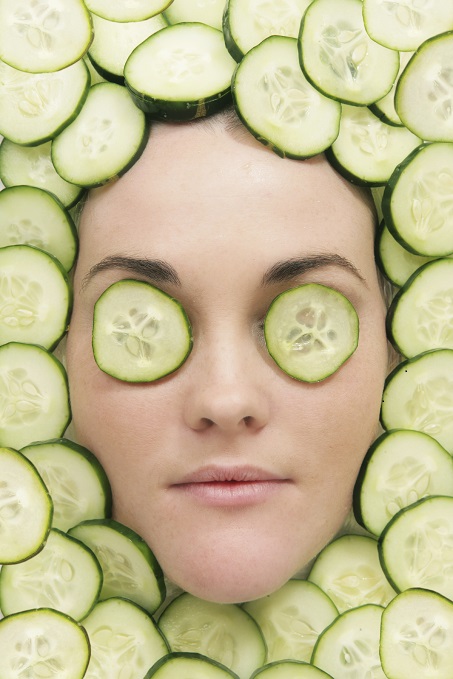 Just like random French villagers who have priceless 15th century paintings hanging in their living room without realising it, supermarket visitors have been walking past the ultimate hangover cure for years.
Just like random French villagers who have priceless 15th century paintings hanging in their living room without realising it, supermarket visitors have been walking past the ultimate hangover cure for years.
Cucumber is usually bottom of the barrel for acne, as its vitamin C and vitamin A are feeble, and it even lacks antioxidants. Those women who place cucumber rings around their eyes are barking up the wrong tree.
Weirdly though, two studies have released showing that cucumber can accelerate acetaldehyde metabolism.
This study analysed dozens of supermarket staples and noticed that cucumbers increased the enzyme acetaldehyde dehydrogenase (ALDH) by 87.25%, more strongly than any other vegetable.
Earlier, happy drunken rats were fed concentrated cucumber juice, increasing the same enzyme and clearing bloodstream acetaldehyde significantly faster (study). What does this mean? ALDH is the enzyme pumped out by the liver which converts acetaldehyde into harmless acetate, fulfilling the next detoxification chain, after alcohol dehydrogenase metabolises alcohol into acetaldehyde.
Nobody knows why cucumber accomplishes this, so the assumption is a unique compound, like its cucumber volatiles. Eat cucumber and you’ll hear a loud motoring sound, steam will come out of your ears, and alcohol’s toxins will be gone in a millisecond (WARNING: not legally guaranteed).
Two – whey protein
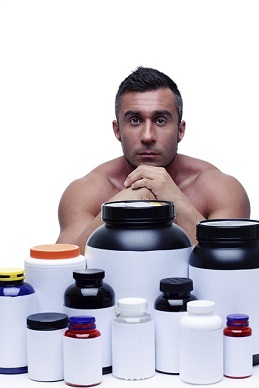 A beloved muscle building supplement, but also a powerful yet straightforward alcohol forcefield. Whey protein rapidly increases the powerful antioxidant glutathione using two amino acids called cysteine and glycine.
A beloved muscle building supplement, but also a powerful yet straightforward alcohol forcefield. Whey protein rapidly increases the powerful antioxidant glutathione using two amino acids called cysteine and glycine.
Quite simply, glutathione is required to detoxify all acetaldehyde and therefore every single annoying red pimple from acetaldehyde.
Without glutathione, alcohol would knock you down dead with a single sip. Compared to KFC or a steak, even an illegally smuggled martian steak, whey protein is much richer in glycine, and its cysteine is the rapidly absorbed glutamylcysteine form.
Glutamate and cysteine are normally combined using the enzyme glutamate cysteine ligase, but in whey protein, they’re already combined (just a few molecules need shaving off), and therefore mega efficient. Glycine then steps in, combining with gamma-glutamylcysteine to pump out the finished antioxidant.
These ingredients would be strong enough, but two studies tested alcohol directly.
In 2008, glutathione levels plummeted in cells exposed to alcohol, but were restored by whey protein (study), while a 2006 study was almost identical. A non-acne study gave athletes six vodka and orange flavoured cocktails, and while their protein synthesis mainly declined by 37%, with whey protein it fell by just 22%.
Interestingly, the Greek Hippocrates and Roman Galen both made a revitalising health tonic with this cheese-making byproduct as an ingredient. I recommend whey protein concentrate, for the full nutritional spectrum, but several studies have found glutathione benefits from whey protein isolate. Aim for grass fed.
Three – pomegranate
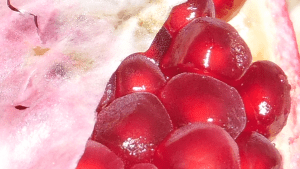 If you listen to clickbait articles and their psychological manipulation, the world’s best hangover cure is a freaky fruit closely resembling an alien jelly fish egg.
If you listen to clickbait articles and their psychological manipulation, the world’s best hangover cure is a freaky fruit closely resembling an alien jelly fish egg.
Supposedly, the more disgusting, the more people will accept miraculous medical properties, but our next food is the tasty pomegranate.
Because alcohol detoxification depletes antioxidants like glutathione and vitamin C so strongly, other antioxidants have to pick up the slack, and the pomegranate is the perfect remedy. Its ORAC antioxidant score is 10500 compared to 4302 for strawberries and 385 for pineapple. Key players are delphinidin, punicalagin, cyanidin and pelargonidind.
Better yet, pomegranates were once tested directly on drunk rats. Booze increased oxidative stress (free radicals) and inflammatory chemicals in the bloodstream, the father of glowless skin. Their guts also became leaky, losing control of nutrient absorption, after tight junction proteins like ZO-1, occludin, claudin-1, and claundin-3 malfunctioned.
This is the foundation of alcohol’s acne-causing mayhem, and the pomegranate reversed everything.
Money saving tip: never fall for prepackaged pomegranate seed bags. They look purple and shiny, but they’re always a rip off and a whole pomegranate fruit will yield twice as many seeds. It’s probably wise to hack your pomegranate open BEFORE you start drinking, because it’s a fiddly, finger slicing operation at the soberest of times.
Four – cheddar cheese
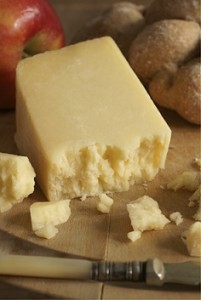 The real reason why mice and rats wisely eat a portion of cheese every day. Cheddar cheese is loaded with all three holy glutathione minerals: zinc (21% per 100 grams), magnesium (7%) and selenium (20%). Magnesium, for example, is an ingredient of gamma glutamyl transpeptidase, an eco-friendly enzyme which recycles existing glutathione in your bloodstream.
The real reason why mice and rats wisely eat a portion of cheese every day. Cheddar cheese is loaded with all three holy glutathione minerals: zinc (21% per 100 grams), magnesium (7%) and selenium (20%). Magnesium, for example, is an ingredient of gamma glutamyl transpeptidase, an eco-friendly enzyme which recycles existing glutathione in your bloodstream.
A 2008 study was the most basic imaginable; feed children magnesium, and analyse glutathione. Their bloodstream showed a huge increase.
Like whey protein, cheddar cheese is also rich in cysteine and glycine. Most random though is the same tantalising cucumber study, where cheddar cheese increased the acetaldehyde-detoxifying ALDH enzyme by 18.63%.
The compounds above only control glutathione production (we think), so here we have a unique skin-protecting property, bestowed on all beer-lovers by the cheese gods.
The traditional cheese and wine pairing could also be evidence. Conventional wisdom says it’s all geographical; brie and Beaujolais wines were originally grown in nearby French fields, while Asiago cheese and brunello are Italian cousins.
But what if old medieval medicine men noticed the benefits for hangovers, and thus acne? These observations could have been forgotten, absorbed into the vast collective of history, but endure today as the tradition.
Cheddar cheese also contains vitamin A, relieving your carotenoid antioxidants (see carrots). You might also be crowned king of the mice, or wake up in a ditch thinking you were.
Five – oranges
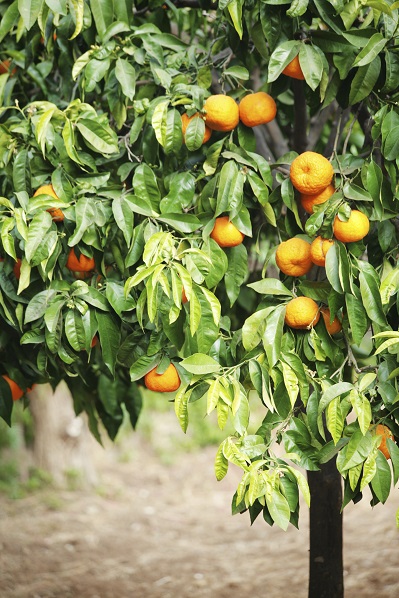 Have you ever considered the noble quest of swallowing an orange whole? Then this is your time to shine because oranges may protect your skin from alcohol.
Have you ever considered the noble quest of swallowing an orange whole? Then this is your time to shine because oranges may protect your skin from alcohol.
Oranges can also increase the ALDH enzyme, by 15.48% in the biggest study. Another study analysing 20 fruits found that it reduced acetaldehyde itself particularly strongly, although ALDH actually fell.
The verdict: very promising, but orange’s vitamin C is also a bonus. Vitamin C is vital for acne, for calming stress, healing wounds, and vampire-style youth by increasing collagen. Since the 1980s, the studies have slowed to a trickle, but nevertheless…
ONE: A 1978 study found that 91% of alcohol abusers had a vitamin C deficiency, compared with 31-55% for vitamin B1 and 23% for vitamin B2.
TWO: 96% of alcoholics (24 of 25) were deficient in vitamin C, which was partly fixed in five days using a 500mg daily supplement (1981 study). The scientists suggested that vitamin C should be handed out to detox clinics.
THREE: Human brain glial cells were much stronger against ethanol after being enriched with vitamin C, reducing neuron damage (2003 study).
As oranges contain an average of 60.5mg per 100 grams of fruit, they can crack down on madness.
Some theorise that alcohol messes up your absorption of vitamin C in the gut, others speculate the vitamin C rides to the rescue and slays acetaldehyde itself.
Heed this warning though: orange juice is a completely different game. The juice is stored in stuffy warehouses and lorries for months before landing on your breakfast table, depleting its vitamin C reservoirs.
This hangover cure may be perfect for Christmas, as in one study, oranges had 61.6mg of vitamin C in winter followed by spring (59.2mg) and summer (50.6mg). Spinach had a particularly massive difference, with 43.6mg in winter versus 29.8mg in summer.
And last but not least, orange flavoured gin will not work!
Six – carrots
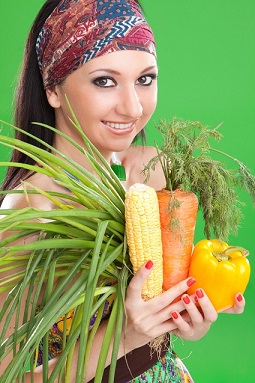 If you’ve ever looked at your friend’s amazingly glowing skin and sighed with frustration, wondering why moisturisers never work, there’s a great chance that she has more carotenoids built into her face.
If you’ve ever looked at your friend’s amazingly glowing skin and sighed with frustration, wondering why moisturisers never work, there’s a great chance that she has more carotenoids built into her face.
Alcohol depletes these antioxidants in the bloodstream, but carrots restore them. Carrots’ orange colour is precisely caused beta-carotene, zeaxathin, lutein and their cousins. Carrots have 143% of the RDI for vitamin A, and almost all is from plant-based carotenoids.
One study tested 18 women, and noticed 18% high carotenoids in the light drinkers. Another study found that 95 alcoholic men had lower bloodstream carotenoids, compared to 112 sensibly drinking men.
Two nails were hammered into the coffin: that 1) the specific carotenoids tested were plentiful in carrots (beta-carotene, zeaxanthin, cryptoxanthin), and 2) their carotenoid levels revived just days after stopping drinking.
How many times have you rolled in from the bar at 4am and witnessed griminess and dullness in the mirror? Acne is one thing – carrots are perfect for defeating alcohol’s dastardly attempts to steal your glow. Carotenoids can even make you more attractive to the opposite sex. Don’t let beer be your downfall!
Another trick is to eat the carrots with a fat, like avocado, shown to enhance the carotenoids’ absorption five fold. You could even choose a fellow alcohol shield, like dark chocolate or cheddar cheese. Two medium carrots daily should save you from beer’s wicked ways – just don’t get locked up in your neighbour’s rabbit cage.
Seven – black tea
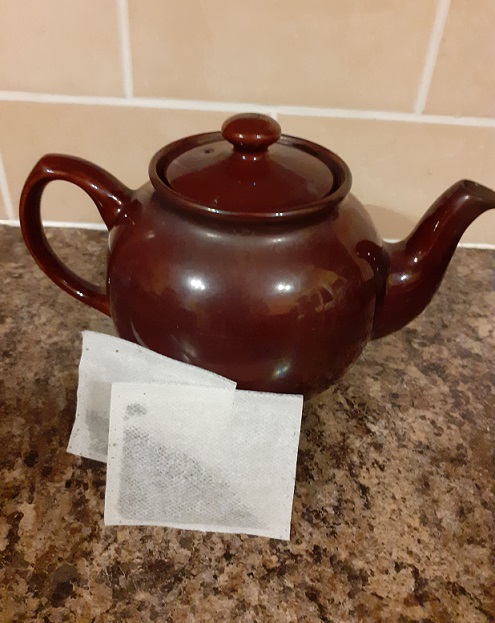 A possible explanation for why the English can drink so heavily. Alternatively, a long-forgotten reason why the English love tea in the first place.
A possible explanation for why the English can drink so heavily. Alternatively, a long-forgotten reason why the English love tea in the first place.
In the massive cucumber study, black tea increased the ALDH enzyme by 21.25%, while in a separate study on 20 beverages, it increased the enzyme by 5.67%. Two studies and two increases.
Even better, an individual, laser focused study trained rats to order at the local pub. In liver, blood and brain, their glutathione, vitamin C, vitamin A, and vitamin E levels all plummeted, but black tea reversed every decrease.
A speculation was black tea’s endless reservoir of antioxidants, and one called quercetin has its own study. Again, glutathione was restored while two inflammatory chemicals called TNF-α and interferon-y fell. Black tea contains 3.64mg of quercetin per 100ml, easily beating raspberries (0.02mg) and apples (0.13mg).
Other antioxidants include gallocatechin, catechin 3-O-gallate, kaempferol – the list stretches into the horizon, and one probably inhibits ALDH. Black tea also masks the effect of drunkenness by making you look more civilised.
As for caffeine? A complete mystery, but no evidence right now says that caffeine affects acetaldehyde or its main detoxification enzymes.
It’s surprising for such a powerful drug (the world’s most popular), but black tea is officially free from downsides. Just don’t try mixing the two and wondering whether you’re secretly Einstein’s grandson. Yes, it’ll still work, but no, it’ll taste like tire rubber.
Eight – dark chocolate
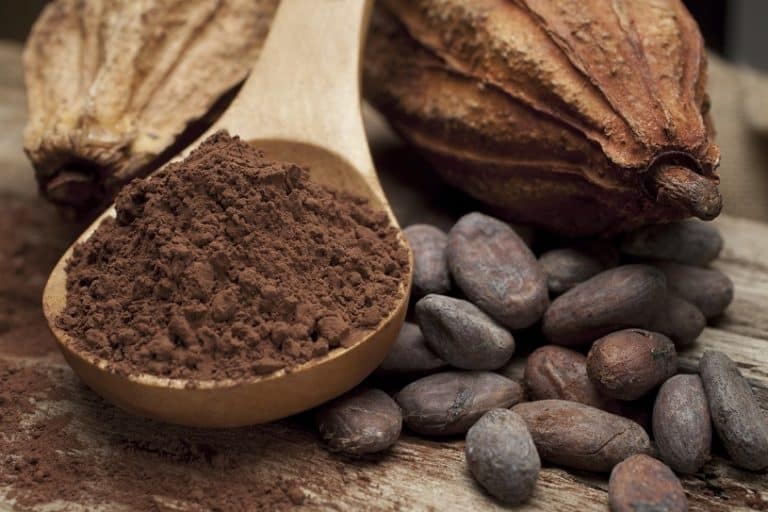 Surely it’s about time that dark chocolate actually damaged your skin somehow? Like sprouting devil horns and eight orange tentacles (although some might find that cool)?
Surely it’s about time that dark chocolate actually damaged your skin somehow? Like sprouting devil horns and eight orange tentacles (although some might find that cool)?
Regardless, 85% dark chocolate can now protect your skin against alcohol, starting with its 44% concentration of magnesium per 100 grams. Some is blocked by phytic acid, preventing its absorption in the gut, but a nice slice is absorbed.
Then there’s dark chocolate’s overload of antioxidants, the precise reason it tastes so great, and why different countries like Ecuador or Ghana taste so different. Quercetin makes a comeback, with 25mg, or 5mg per “typical serving” of 20 grams (your typical serving may differ slightly).
There’s also 20mg of ferulic acid per 100 grams, the second best source after whole grain wheat flour. This antioxidant is extensively researched, because it’s also found in beer, and whether it acts as an inbuilt protection against alcohol is gnawing at scientists’ brains.
Ferulic acid can reverse all decreases in vitamin C, vitamin A and glutathione caused by alcohol (study). Better, ferulic acid has particularly strong absorption for a phenolic antioxidant.
Dark chocolate also tastes mysteriously good when drunk, weakening the gravitational pull towards pizza.
Nine – pears
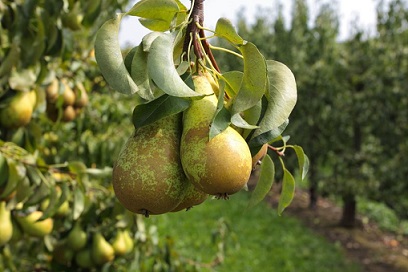 Another food where hungover people are shivering and slurring while sitting literally a meter away from the very fruit bowl that would save them.
Another food where hungover people are shivering and slurring while sitting literally a meter away from the very fruit bowl that would save them.
Pears are the unfashionable cousin of apples, but nevertheless…
ONE – in the giant alcohol study where cucumber succeeded, pears increased the enzyme ALDH by 90.98%, the most out of any fruit, accelerating clearance of the acetaldehyde toxin.
TWO – Korean scientists fed pears to mice, 30 minutes before tempting them with alcohol. They detected a 1.3 fold increase in ALDH activity (study).
THREE – scientists poured Korean pour juice into random people’s mouths and observed decreased sensitivity to light and sound, improved memory, and enhanced concentration (study). The conclusion: “Korean pear juice may alleviate alcohol-hangover “.
The result? Less pounding headaches, and less acne on your face. Light sensitivity, pimple formation – it’s all the same acetaldehyde mechanism.
Pears are the most unexpected alcohol shield of all, except maybe cucumbers. It shows how specific the powers are, because its friend the apple achieved nothing. Supposedly, the Korean pear was tested in the first place because it’s a traditional Asian hangover remedy.
The pear’s sole ambition in life could be to let everyone get drunk and have fun. Essentially, the pear wants to be eaten.
Ten – asparagus
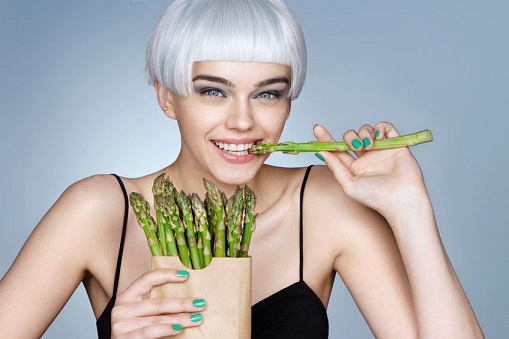 Like cucumber, asparagus is an alcohol-defending secret uncovered by a single random study.
Like cucumber, asparagus is an alcohol-defending secret uncovered by a single random study.
Its nutrients are weak, like 9% of the RDI for vitamin C, 15% for vitamin A, and 6% for vitamin E. However, in the study, asparagus upregulated both alcohol dehydrogenase and aldehyde dehydrogenase. ALDH increased nearly 2.5 fold, with no explanation given.
Asparagus also protected liver cells against alcohol’s toxic metabolites, a great sign for your bloodstream, from where they wriggle their way into your skin.
The study sent ripples around the world. It’s obvious that asparagus HQ is unaware, in their asparagus shaped castles with their asparagus shaped cars, otherwise their billboards would never end.
Asparagus might also push back the forces of alcoholic dullness, as it’s the richest popular supermarket vegetable in the flavonoid antioxidant rutin. This compound enhances capillary blood flow, providing a flush of fresh colour to your cheeks. The quantity is 23.19mg of acne-clearing rutin vs 0.22mg in the “stellar source” apples. Furthermore, steaming asparagus barely dents the rutin. It’s even possible that rutin itself is behind the ALDH increases, or another compound we’re fully aware of.
Eleven – salmon
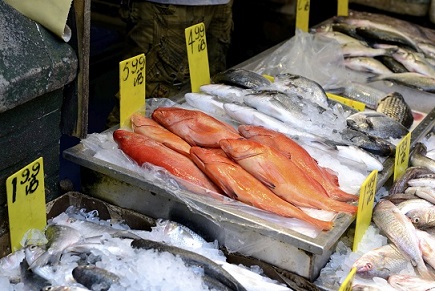 If you’re having dinner at home first, before the drunken party kicks off at exactly 8pm, then salmon is the pinnacle of main courses for skin protection.
If you’re having dinner at home first, before the drunken party kicks off at exactly 8pm, then salmon is the pinnacle of main courses for skin protection.
It’s mostly down to its astaxanthin, a popular health supplement. Astaxanthin is a natural pigment which salmon farmers feed their fish to make it fun and colourful, but it’s also a potent (and uncommon) carotenoid antioxidant.
In brain tissue, acetaldehyde can downregulate a pathway called cyclic AMP-responsive element binding protein, which controls cell survival and apoptosis (self destruction), but astaxanthin can reverse this (study).
It doesn’t end there, as astaxanthin can protect against sunlight, banish wrinkles and preserve skin moisture. Perhaps even better are salmon’s omega 3 fish oil supplies. Omega 3s are vital for acne by constraining an overactive immune system, and it’s theorised that alcohol abuse activates an enzyme called PLA2 which depletes your stores (study).
One omega 3 study wiped out 90% of the brain inflammation from drinking alcohol – skin cells are only a small step away.
The icing on the cake is 43% of the RDI for selenium, boosting your glutathione defences. Don’t catch salmon with your bare hands and eat it raw like Gollum (you’ll probably be kidnapped by bears anyway). Get wild sockeye salmon, the richest variety in astaxanthin with 38mg per 100 grams (study). Rainbow trout (26mg), coho (21mg) and Atlantic farmed salmon (9mg) are close behind.
Twelve – broccoli/cabbage
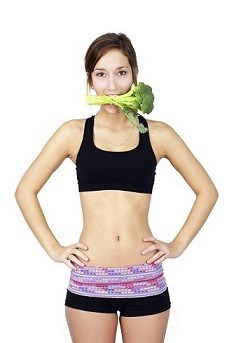 What if I told you that by eating your greens, you could drink alcohol without any worries? That the furry tongue, thumping headache and little red pimples would all be held up in traffic?
What if I told you that by eating your greens, you could drink alcohol without any worries? That the furry tongue, thumping headache and little red pimples would all be held up in traffic?
Specifically, broccoli and cabbage are the richest cruciferous vegetables in sulforaphane, created when the compound glucoraphanin digests in your stomach.
It started in 2013 when a study fed sulforaphane to mice. Their ALDH enzyme levels more than doubled, and better yet, the toxin acetaldehyde vanished from the bloodstream. The story continued when this study tested cabbage, broccoli, raddish, cauliflower and turnips. Every last one increased acetaldehyde hydrogenase activity, but broccoli and cabbage were a cut above. The mechanism was actually discovered for once: sulforaphane literally bound to sites in ALDH’s molecular structure and enhanced its power.
Broccoli is a food where you can just sense it will help. It gives you an armoured, indestructible, healthy and strong feeling, like what oats claim to do.
Putting the cherry on top is the vitamin C, at 97% of the RDI, with tasty sprinklings of magnesium and vitamin A. Don’t forget the cooking method: steaming broccoli is the kind, gentle preservation strategy for both vitamin C and sulforphane, and therefore alcohol protection, while boiling is known to be savage (study, study).
Thirteen – strawberries
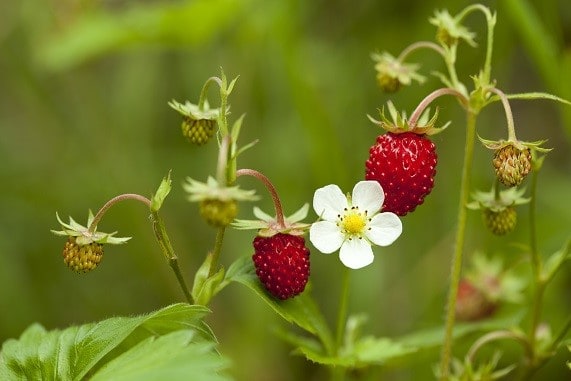 Finally, we have the ultimate limitless drinking snack, a tempting fruit that tastes delicious, yet bolsters your acne defenses with each mindless drunken mouthful.
Finally, we have the ultimate limitless drinking snack, a tempting fruit that tastes delicious, yet bolsters your acne defenses with each mindless drunken mouthful.
Things couldn’t be simpler: strawberries combine vitamin C and antioxidants into a skin-enriching double whammy. There’s 97% of the RDI for vitamin C, beating oranges (88%), apples (7%), and grapes (6%), preventing alcohol from depleting your pimple-healing supplies.
Then there’s the healthy ORAC antioxidant score of 4302. It’s cool that strawberries are even confirmed in studies to increase antioxidants in the bloodstream, proving that they’re not all in inabsorbable forms by a nasty stroke of luck.
When the drunken urge to eat, eat, and eat some more kicks in, you can simply grab some acne-clearing strawberries. Horde them around your house if necessary, like a long-forgotten cold war ammo stash.
Remember to store your strawberries in the fridge. It sounds basic, but temperatures of 25C seriously reduce the phenolic antioxidants, while 4oc can even increase them (study). Freezing your strawberries can also preserve the antioxidants.
Organic is another must for acne-friendly happy drunken times, because in 2019, strawberries ranked number one in the dirty dozen list. Atrazine and its pals can all crank up inflammation, but many specific strawberry pesticides like bifenthrin and 1,3-dichloropropene (names which make your mouth feel funny) are confirmed to be detoxified by glutathione, depleting your supplies.
Conclusion
Have you ever reached for a beer with a smile on your face only to hear a niggling doubt at the back of your mind? Those doubts can now be silenced.
Never-ending binge drinking will still destroy your skin, but by eating these foods while drinking or immediately before, your pimples will be slightly more invisible, your glow slightly stronger. Alcohol has been popular for thousands of years, so some of these hangover cures have surely been discovered before in a eureka moment,
The real secret is both long-term and short term strategies. Magnesium, glycine, cysteine – all are vital for your daily diet. Vitamin C will build itself steadily into your skin rather than fighting battles solely in the bloodstream – acetaldehyde won’t stand a chance.
Thanks for reading!

Good morning Richard
Do you know anything about fish oil pills and if they are worth their money or are contaminated etc? Or should we try catching our own fish. The river where I live is very polluted 😢
Ute
I would ignore the polluted river. If you buy fish oil pills then get a cold-pressed, virgin version as downmarket fish oil pills often go rancid in the bottle and end up swimming with free radicals. Omega 3s are extremely beneficial for acne, but as a polyunsaturated fat, they still have a delicate molecular structure. So fish oil is OK if you buy the right brand, but wild caught Alaskan salmon is even better.
Greetings, Richard. So are you saying black tea is safe to drink for men, or will it mess with our hormones like green tea?